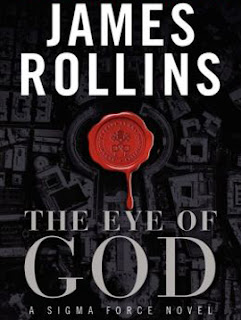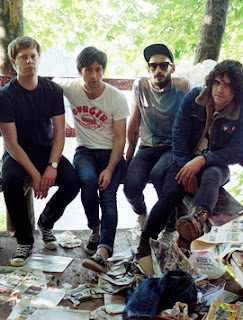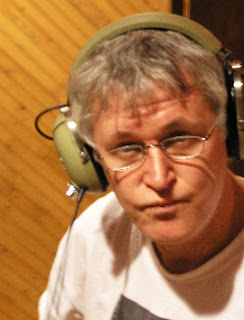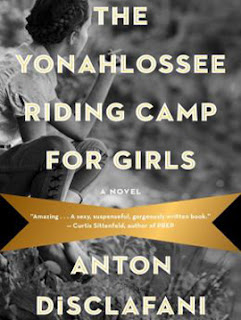The addition of keyboardist/organist/bassist Jed Walters occurred just as they wrapped In Stereo, the band's dense and riveting sophomore album. And that alone is what makes their newest album, The Depths, so memorable. It marks the first time that the trio has laid down an album together.
The result is surprisingly organic, partly because that's the direction they wanted to roll. But also because every stitch of it was recorded in a home studio. There were no time constraints to abide by this time. They played on and measured every note until they got it right or broke something trying.
"The Depths is our best release yet and the first we have made entirely under our own steam," says vocalist-guitarist Shane Hicks. "It was a huge learning curve with much trial and error but in the end I think the result has vividly realized our ideas and vision. This is how we will make albums from now on."
Vivid can readily be dismissed as an understatement as The Depths climbs in, out and around 14 tracks of dark, atmospheric rock that sometimes borders on the edge of metal. But then again, metal isn't what accounts for the mysterious drone of the Blackwater Fever. It's how they bend blues, soul, and trip-hop.
The Depths is another triumph for the Blackwater Fever.
The album opens with When The Night Comes, a three-minute introduction that establishes the eerie atmospheric spirit of the band. The influence of Walters is also immediately apparent. He adds even more heaviness between the bass, organ, and keys while giving Hicks and Andrew Walter (drums) more room to roam, allowing them to ease into some arrangements instead of powering through it all.
The flexibility lends itself well to a diverse, fully realized album with some epic experimental moments. Even the added reverb feels right at home. Sometimes it lends a psychedelic flair to the guitar and bass work. Other times it fills out the foundation of a song without being overdone. And occasionally it stretches notes a beat or two longer in precisely the right places with an impeccable, unforgettable effect.
Won't Cry Over You balances the band's garage blues and the husky, oft throaty vocals that smolder over some lyrics instead of singing them. At the open, the song chugs along as Hicks leads it to its blistering conclusion — love hurts until we're over it. At two minutes in, the band is over it breaking into an instrumental-driven jam and diverse arrangements. Hicks revisits for a subtle refrain.
Like most of the album, there is a toughness to it. Hicks and company are very serious about conjuring up the rawness and roughness of the old South as much as the outback. Tracks like Seven White Horses, Tide Rider, and End Of Time are heavy with a rugged sense of identity and purpose.
Other standout tracks include the aggressively cast Can't Help Yourself, the shuffling and smoky slowdown in Rat Eyes (complete with thunderclaps), and the pained and soulful brooder Oh Deceit. To round out the album, add in the raspy, Southern-fried storytelling in Don't Fuck With Joe. Although more fun than fiery, the tongue-in-cheek ditty features some nice keyboard work.
The Depths By The Blackwater Fever Brandishes 9.4 On The Liquid Hip Richter Scale.
For anyone looking for garage blues-driven rock with more depth, musicians of diverse talent, and an album laid out so well that it will earn its playtime, The Depths by the Blackwater Fever will deliver for months and years to come. This year might have only recently eclipsed its halftime mark, but The Depths sets a high water mark as the best self-produced indie rock album out this year. It's infectious.
You can find The Depths by the Blackwater Fever on Amazon. You can also download the album from iTunes. For show dates in Australia, catch the band on Facebook.
![Liquid [Hip]](https://blogger.googleusercontent.com/img/b/R29vZ2xl/AVvXsEjAFBQPqS7J0-rrttNoRYSsuwIePPZf4Nq6sqDioK1zzVQXJIQXKzq_NVNI4n6h3inuRQFBKOcJeZeSufkdHHIOxbSWyBjTjTxgKEQGyPzdwvkEEeECh4bI5YEGk4RWGUINSd7vulPQsCA/s1600-r/liquidhip.jpg)





































